Site Planting
Site Planting Design considerations and awareness
Given the importance of all external site spaces and the need to think about these as part of a flow of spaces continuing into the building, the planting in a setting needs to be carefully considered as part of the overall UD approach.
Planting along access routes provides an ideal multi-sensory and educational experience for all users as they enter or leave the setting. Planting provides direct contact with nature and an opportunity for adventure and exploration within the ELC environment.
Planting can help with orientation and wayfinding by providing visual, olfactory (sense of smell), and tactile experiences that function as landmarks or focal points. This can make approach routes and entry points more identifiable and provide opportunities to create distinct and recognisable areas through native and familiar planting.
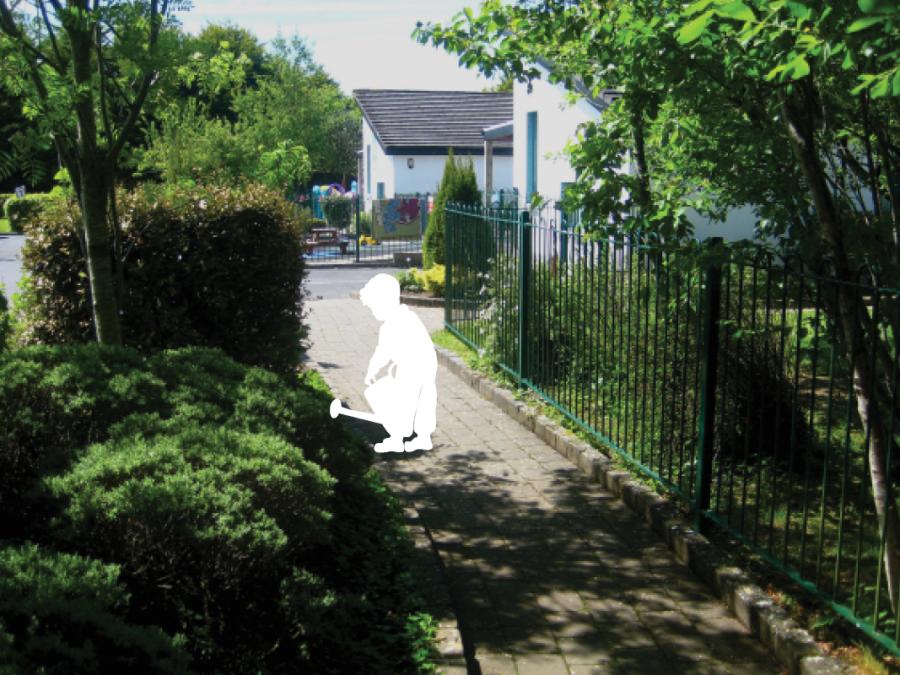
19. Ballindereen Community Childcare and Education Centre, Ballinderreen, County Galway
Ballindereen Community Childcare and Education Centre, Ballinderreen, County Galway.
Design features
- Attractive site landscaping with diverse planting creates a calm, gently stimulating multi-sensory, restorative and healthful space for children as they move through the site.
- Smooth and flat paving provides an accessible route for all users.
Design tip
- Seating, lighting, and shelter somewhere along the access route would help provide a more supportive environment.
Planting can help mediate against air pollution and overheating by providing shade to external and internal spaces. It can also help control certain negative stimuli such as glare and noise.
Planting must be selected carefully to avoid trees, shrubs or flowers that are known to cause respiratory difficulties, allergic reactions or skin irritations. Certain plants are toxic if ingested: examples include Deadly Nightshade, Foxglove (Digitalis), Monkshood (Aconitum) and Giant Hogweed. Other plants such as the Dandelion, Geranium, Carnation and Marigold are considered to be low-toxic plants but can still cause irritation to the mouth or stomach upset if they are consumed. Refer to the National Poisons Information Centre website for more information about poisonous or toxic plants.
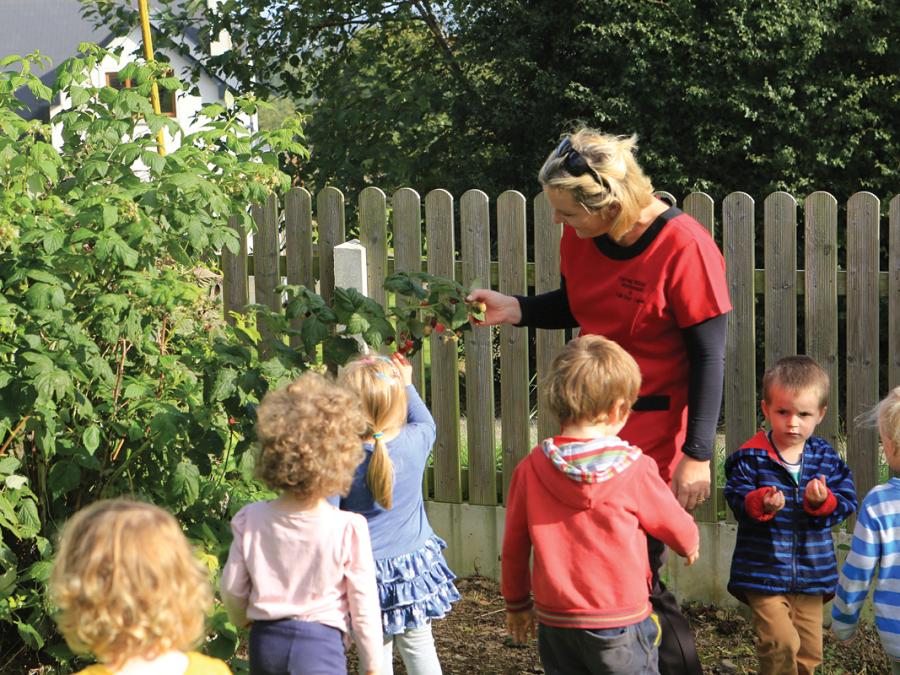
20. Carraig Briste, Enniscorthy, County Wexford
Carraig Briste, Enniscorthy, County Wexford.
Design features
- Planting provides interactive and educational experiences for children.
- Fruit bearing plants such as a strawberry bush provide opportunities for
children to see and taste fruit grown within the setting.
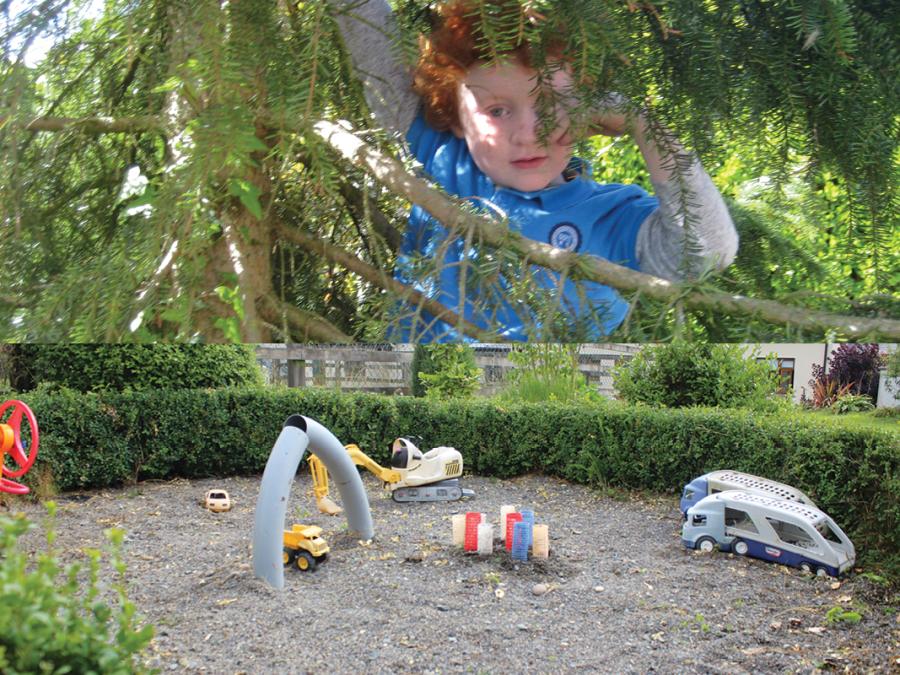
21. Naíonra Choill Mhic Thomasín, County Waterford
Naíonra Choill Mhic Thomasín, County Waterford.
Design features
- Trees and bushes planted along entrance routes or other shared spaces provide opportunities for play and adventure throughout the site beyond the dedicated play areas.
- In addition to low and medium level plants, shrubs and bushes, taller and more robust planting such as trees will encourage climbing and adventure.
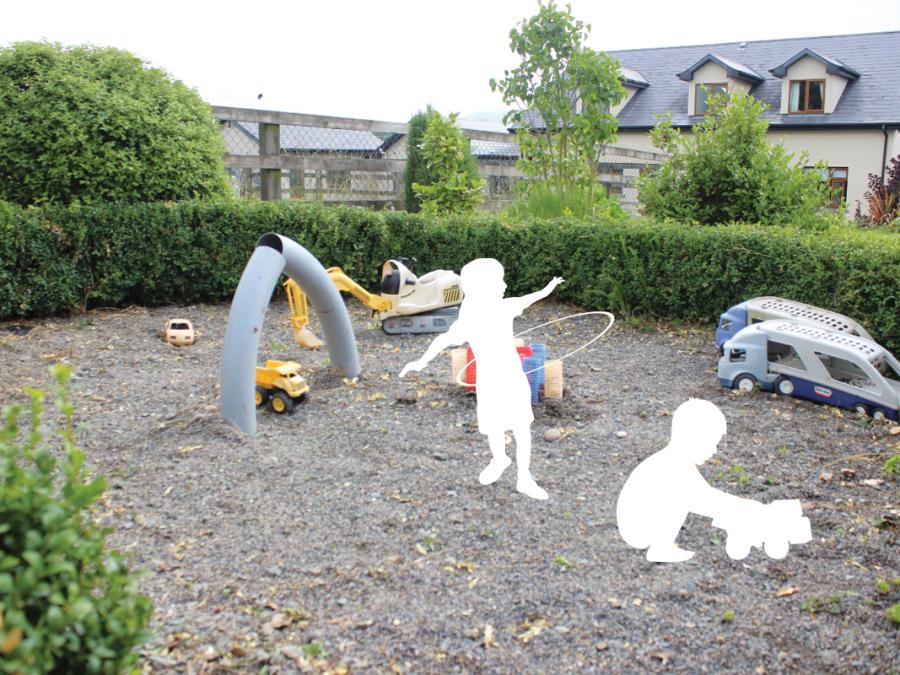
22. Puddleducks Playschool, Ballylanders, County Limerick
Puddleducks Playschool, Ballylanders, County Limerick.
Design features
- Low level planting creates defined areas for play while being easy for adults to supervise.
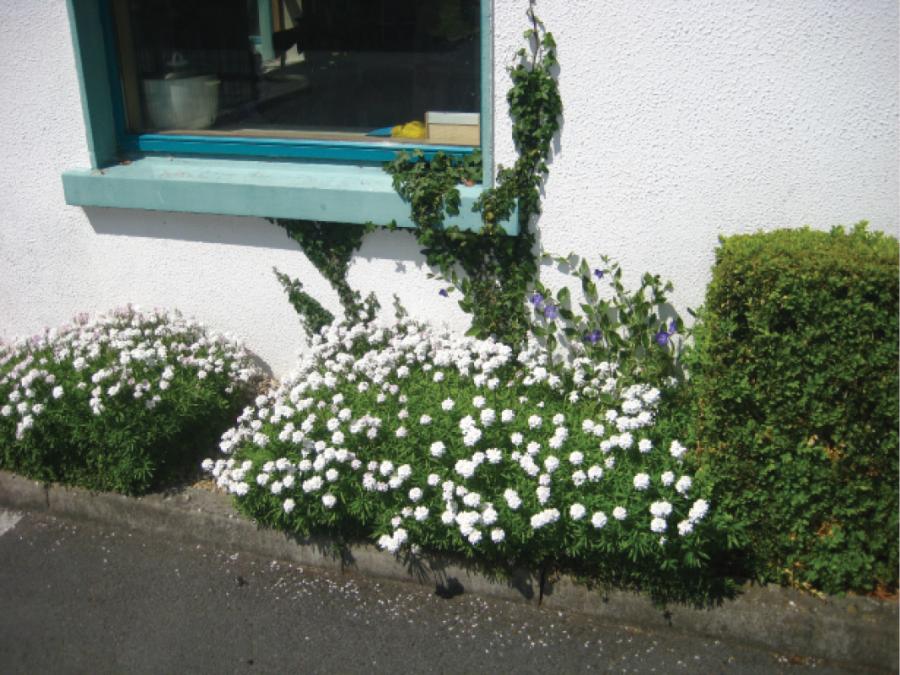
23. Ballindereen Community Childcare and Education Centre, Ballinderreen, County Galway
Ballindereen Community Childcare and Education Centre, Ballinderreen, County Galway.
Design features
- Planting along the edge of the entrance route softens the appearance, provides sensory experiences and an opportunity to interact with nature.
- Planting with distinctive colours and scents reinforces wayfinding as it provides visual and olfactory cues in key locations.
- Planting can absorb sound and provide an acoustic barrier to reduce impact of external noises.
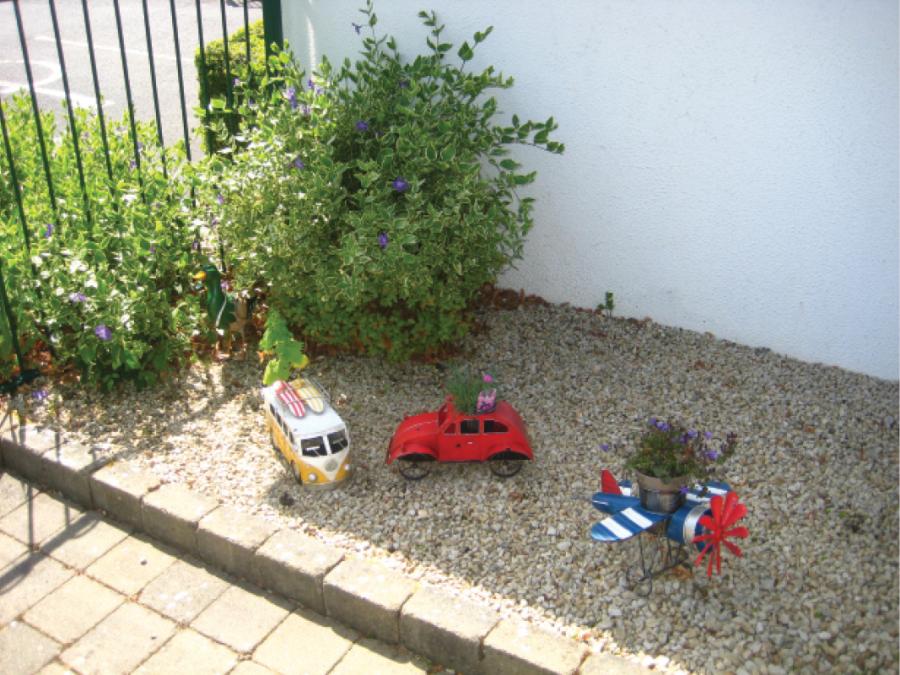
24. Ballindereen Community Childcare and Education Centre, Ballinderreen, County Galway
Ballindereen Community Childcare and Education Centre, Ballinderreen, County Galway.
Design features
- Playful objects among plants encourages interaction with nature.
- The use of gravel and stones provides multi-sensory stimulation for children.
- Planting to railings behind helps to visually soften the appearance of the fence.
Design tip
- A greater colour contrast between the edging and the path would make the kerb easier to see and reduce the risk of someone tripping on it.
Universal Design Guidance
- Use planting to enhance the overall site and to increase wildlife and biodiversity generally.
- Create soft landscaping areas that provide play spaces, adventure and challenge for children throughout the site.
- Use planting for multi-sensory stimulation and orientation to time of year through seasonal plants that flower, bear fruit or change colour throughout the year.
- Avoid plants that are known to exacerbate allergies or respiratory difficulties, that irritate the skin or are toxic if ingested (see above).
- Carefully locate trees that shed excessive fruit or leaves so these do not cause slipping or tripping on paths. Maintain planting to keep pathways clear.
- Use colourful and distinctive planting in strategic locations and destinations to create visual landmarks to help with wayfinding.
- In line with the creation of visual landmarks, use fragrant planting to reinforce wayfinding by providing aromas in certain key locations such as entrances or junctions along approach paths.
- Use planting to help mitigate air pollution, overheating and glare by providing shade to external and internal spaces, and act as a noise buffer.
Note: Refer to Section 3.4 of these guidelines for more details regarding outdoor spaces.

“In choosing a pre-school for my daughter, the location with outdoor space to play and explore was very important.”




